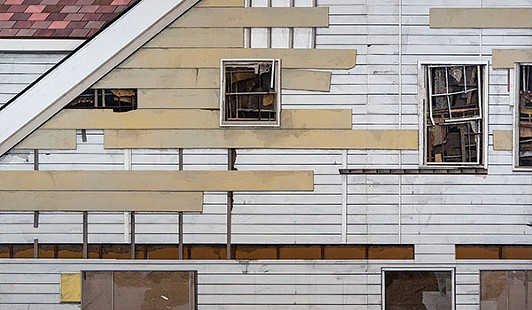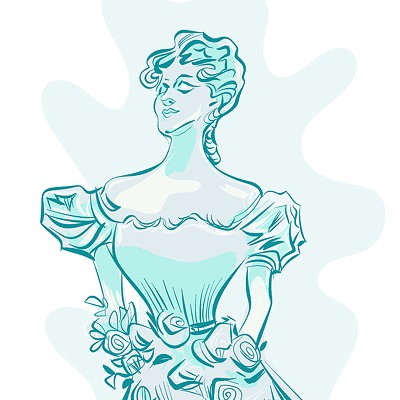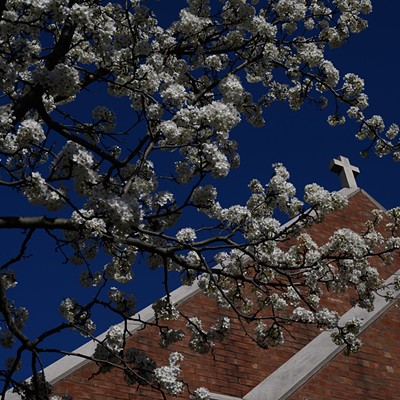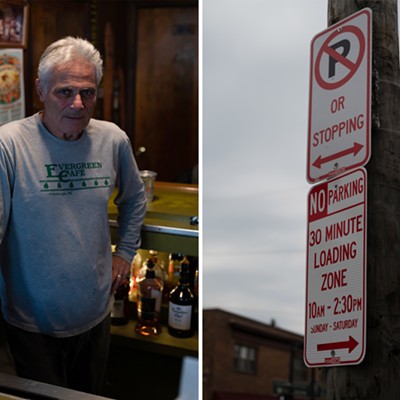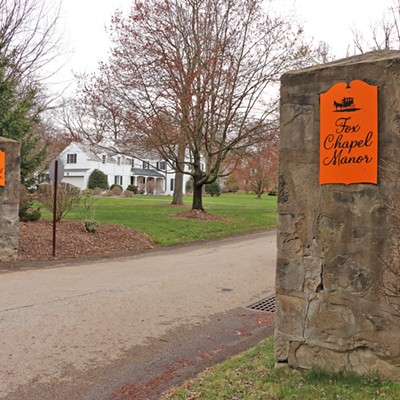Seth Clark is the recipient of the 2015 Emerging Artist of the Year award from the Pittsburgh Center for the Arts, and the breathtaking exhibition now on view in the gallery proves him beyond worthy for the honor. He’s additionally a contender for many more such honors; if the works here collected are representative of someone just crossing the threshold of his creative journey, what he’ll produce moving forward should be nothing less than astonishing.
In his artist’s statement, Clark describes his work as centered upon “deteriorating architecture.” With this latest outing, Clark fills three of the Center’s gallery spaces; though there are close to three dozen works included, all interpret what could probably be one single structure, most likely a house, and possibly a home. This structure is composed simply of dark wood and white drywall, translated in charcoal, graphite and pastel in addition to the practical materials used for building, captured on canvas, through sculpture, as installation, and scaled from miniature portals to paintings that occupy entire walls.
Execution ranges from to the fantastical transformation of mundane material into something eerily mysterious that beckons with its oddity, to the heartbreakingly literal documentation of a structure that disinterest has driven into disrepair (instantly punching square in the throat anyone who has ever attempted to renovate a turn-of-the-last-century Pittsburgh rowhouse, while easing her wallet from her pocket). This house is not a home: It’s been diminished and rendered ineffectual; it does not give shelter. Through neglect, decay and the violence of demolition it’s been reduced to pieces, segments, parts without sum. And yet, the damages do not seem irreversible, and the cause not wholly lost. The scraps of flooring and flats of wall paneling haven’t been transformed, as happens with structures left alone for long enough — mold spots grow on walls, weeds and webs sprout in corners and cracks, mice leave marks and evidence, and something new develops. We’re not there yet; not even dust has gathered. There’s still hope.
Major pieces dominating sections of gallery walls layer, or appear to layer, story upon story of faintly Victorian detritus that you peek and peer dizzily into, creating with their texture an unbelievable depth and the convincing illusion of teetering on the edge. A smaller, identically sized trio is almost indistinguishable squares of solid board, the same in their attributes, varied in their imperfections, cracks exposing the wood within.
Shapes are unexpected and scale is disregarded. Strips of wood form a rough orb like a splintery Death Star, vibrantly alive, or a collapsing circle perilous and dynamic. Circles are complete in frame and perimeter, but missing portions within. The suggestion of transformation is not only important but continually present, and the state of flux is often accented by the works’ refusal to sit tight within frame or upon base, often escaping from those implied boundaries to overflow into their surroundings. A spindly, convoluted, ladder-like assemblage skitters over the edges of its platform like a lumber insect, overgrown and uncontained. A large wall work litters the floor below with joint compound, shedding its scales, bursting its cocoon, metamorphosing. In one of the most captivating pieces, the familiar pedestal that the PCA typically uses to support pieces on display is itself given Clark’s treatment, its top and sides skinned away to reveal the skeleton beneath. It’s brilliant, clever without being cute, simple and keenly original. It’s perfect.
Work is not only presented on the walls; it often goes right through them as well. A peephole delicately framed in dollhouse-sized timbers not uniform but regulated explodes into an exit wound of planks and boards in the next room, spiraling and replicating. Another dainty, tidy passageway curves through the wall in an arcing, semi-circular corridor, realizing the hidden passages and secret portals that all imaginative children dream of stumbling upon, the seduction of magic and adventure within the safety of one’s own familiar surroundings.
The interpretation of a home, or at least a house, as what’s here leveled brings context and connection; the result can be disquieting — you’re stripped to your foundations. It will be interesting to see where Clark goes next; having seen one type of construction thoroughly explored, dissected and revisioned, one waits to see where his eye will turn, what style and substance are on his horizon, what facades will be blasted away. For now, this is a stunning display on where he’s looked so far, and is well deserving of our gaze as well.

